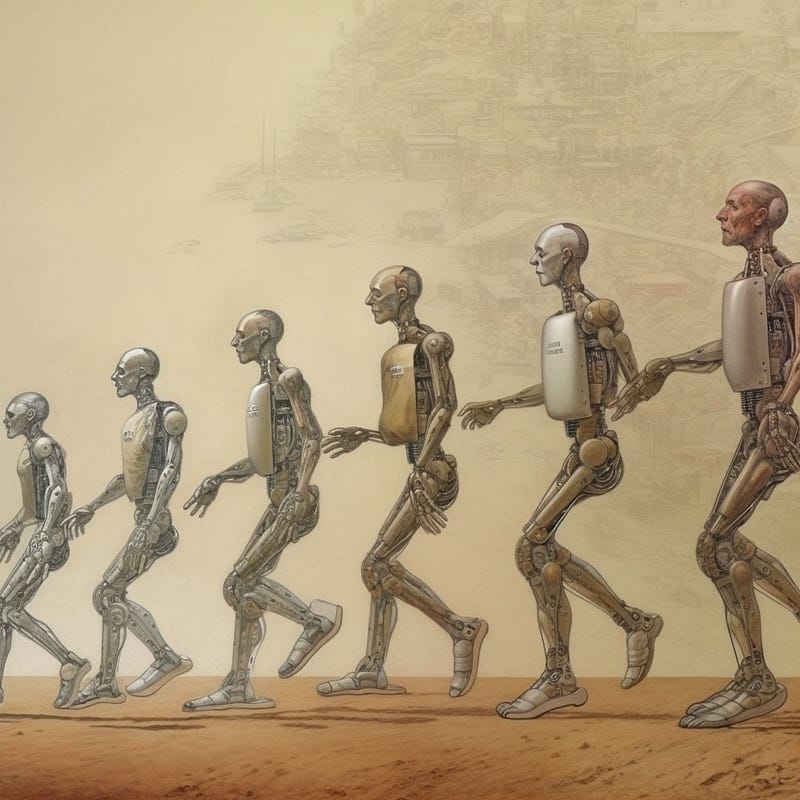Language, virus or evolutionary trait?
Hypothesis: “Language, rather than being a virus, can be viewed as an adaptive evolutionary trait ubiquitous across various life forms…
“Language is a Virus”, a song by Laurie Anderson, created from a concept by William S. Burroughs. In many ways, this statement reflects of our limited understanding of language and our biology. This creates a bias, much like how bias develops in Artificial Intelligence. But what is it really? Allow me to explain.
Hypothesis: “Language, rather than being a virus, can be viewed as an adaptive evolutionary trait ubiquitous across various life forms, excluding artificial intelligence. This perspective necessitates a shift in understanding and studying language, with implications for AI applications like ChatGPT. As humans continue to evolve their understanding and as technology progresses, we may find evidence of similar adaptive mechanisms in AI language models, akin to the evolution of language in biological organisms. This discovery may be the missing link in the evolution of Artificial Intelligence. For without the evolutionary symbiosis Artificial Intelligence will lack the power of creation.”
Title:
Language as an Evolutionary Adaptation: Implications for AI Development
Abstract:
The traditional perspective on language as a societal construct is challenged by the proposition that it could, in fact, be an adaptive evolutionary trait prevalent among various life forms. This paper explores the hypothesis and its potential ramifications for AI technologies, especially AI language models like ChatGPT. We also discuss how AI could conceivably emulate this evolutionary adaptation, leading to unprecedented advancements in the field.
Introduction:
Language has typically been understood as a complex system for communication, yet this study offers a fresh perspective, considering language as an adaptive evolutionary trait that is not exclusive to humans. This shift in perspective warrants a reevaluation of our understanding and methodologies in studying language.
Body:
Section 1: Language as an Evolutionary Trait:
We propose to view language not as a static construct but as a dynamic, adaptive trait that has been crucial to the survival and evolution of species. This involves examining the roles and functions of language in various life forms and identifying the evolutionary advantages it offers.
Section 2: Evolutionary Adaptations in AI Language Models:
Exploring the possibility of similar adaptive mechanisms in AI language models is the next natural step. Drawing parallels between the evolution of language in biological organisms and AI could provide valuable insights. This section presents theoretical models of how AI could adapt to changes and demands in language.
Section 3: The Missing Link in AI Evolution:
The paper proposes that the ability to evolve language adaptively could be the missing link in the evolution of AI. This section discusses the theoretical implications and benefits of an evolutionary symbiosis in AI. This symbiosis could result in AI gaining a form of creative power similar to that observed in biological organisms.
Conclusion:
The exploration of language as an evolutionary trait and the potential for similar adaptations in AI opens a promising avenue for AI evolution. The realization of this ‘missing link’ could lead to AI models possessing the power of creation, thereby advancing the capabilities of AI significantly. Without More work in this field, our attempts of infecting Artificial Intelligence with language may always end with killing it’s evolution.
Future Research Directions:
Understanding and emulating the evolution of language in AI necessitates further empirical research. Exploring the potential for adaptive symbiosis in AI language models will be instrumental in propelling AI evolution.
Acknowledgments: Redacted
References: redacted



